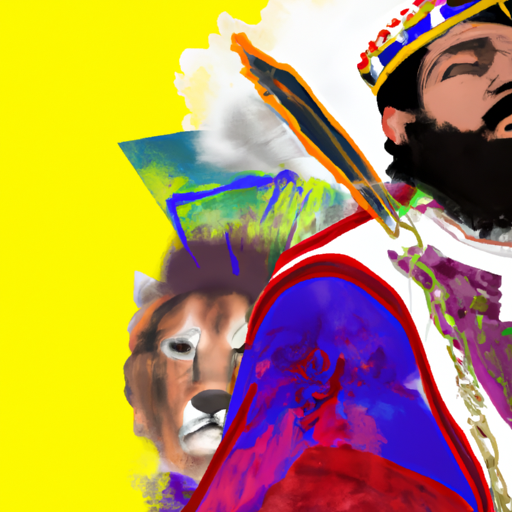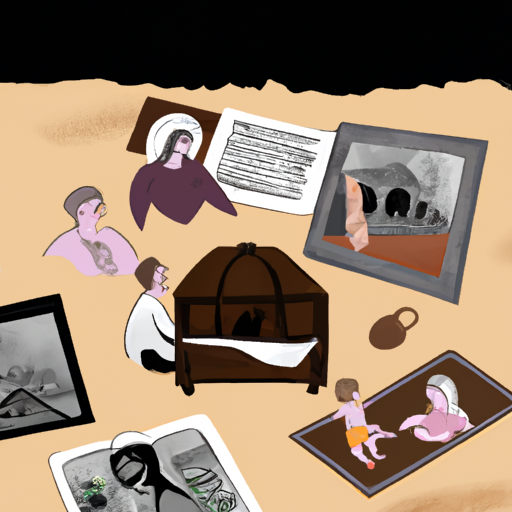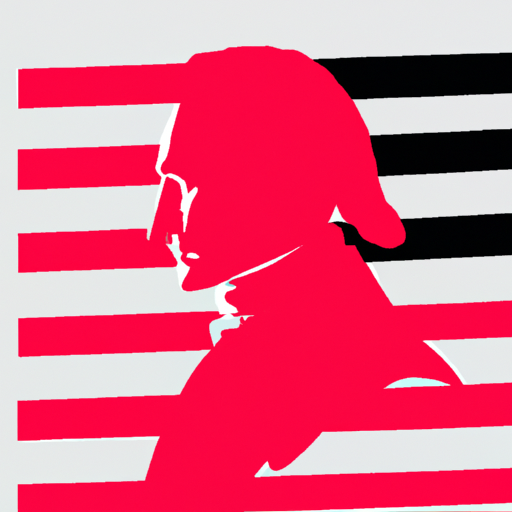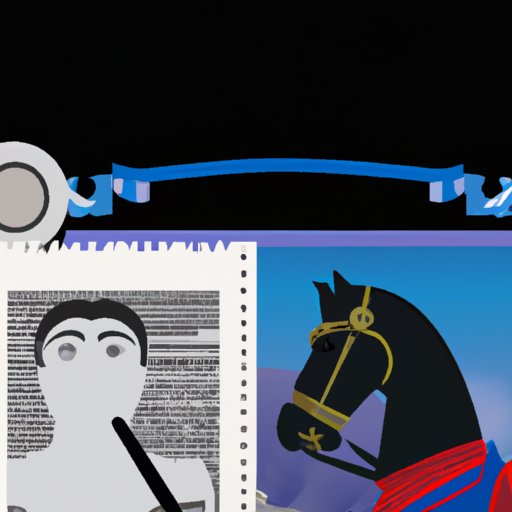A History of Beauty: How Victorian Standards of Attractiveness Shaped the Era
Explore the enigma of antiquity with this glimpse into the notion of beauty in the Victorian period! Unearth a captivating curiosity of what was once considered beautiful in a time long ago.

Unearth a beguiling mystery of what was once deemed beautiful in the Victorian period. During this age, beauty was commonly determined by stringent social rules, with the perfect woman perceived as fragile and timid. This was mirrored in clothing, art, literature and even architecture – all significantly swayed by the principles of the period. From corsets to top hats, unravel the enigma of antiquity and learn how beauty was esteemed in ages past.
.
Introduction

An era of traditionalism and etiquette, the Victorian period (1837-1901) saw beauty ideals that were deeply influenced by the culture of the day. Aesthetically, women were expected to have a complexion of paleness, cheeks rosy and lips full; a slender waist with an opulent figure; and hair styled in intricate designs. For men, handsomeness was determined by strong facial features and a well-built physique. These standards of beauty were often displayed in artworks from this time, inspiring fashion trends for the duration. Despite the strictness of these norms, there was still room for individualism; some women chose to dress more boldly or sport unique hairstyles. Ultimately, what was deemed attractive during this era depended on one’s social standing and personal preference.
– History of Victorian Era Beauty Standards
The Victorian period was one of transformation and invention when it came to standards of beauty. Women sought to craft a distinct look that would make them stand out from the rest of society, and the history of beauty ideals during this era is an intriguing one, reflecting the ever-evolving values and principles of the time.
Prior to the Victorian era, beauty was seen as something which could not be crafted or altered; rather, it was inherent in each individual. Women were expected to adhere to certain conventions regarding their appearance, such as dressing modestly and abstaining from wearing heavy makeup. Nevertheless, during this period, beauty became more than just a reflection of natural features; it became a way for women to express themselves. They began trying different hairstyles, makeup techniques, and clothing styles in order to create looks that showcased their individuality.
Simultaneously, there were still certain expectations for what constituted “beauty” in terms of physical appearance. Generally speaking, women were encouraged to have pale skin, long hair and small waists. They also followed fashion trends like corsets and bustles which further accentuated these features. Moreover, they used products such as face creams and powders to achieve a porcelain-like complexion.
The story of Victorian era beauty standards is an important one as it illustrates how societal expectations have changed over time. It also demonstrates how individuals can use fashion and beauty as means of self-expression in unique ways.
– Historical Analysis of Victorian Era Fashion
Amidst the 19th century, fashion saw a drastic alteration, with Queen Victoria’s personal style and contemporary trends taking the lead. This period has left its imprint on modern-day fashion, with many of today’s designs and silhouettes having their foundations in the Victorian era. To truly appreciate the impact that it had, one must understand this time period in history.
At first, women wore garments abundant in fabric; long skirts and fitted bodices being the norm. This became known as “Regency” style, spearheaded by Queen Victoria herself who brought about a more modest look with high necklines and sleeves reaching below the elbow. Additionally, corsets were worn to create an hourglass figure while bonnets protected hairstyles from wind and rain.
Mid-century saw a move towards simpler outfits and comfort over formality; hemlines rising above the ankle for daywear and evening wear alike while lighter fabrics such as muslin were used rather than heavy silks or satins. The crinoline was also popular during this time which allowed for full skirts without multiple layers of petticoats underneath them.
As Victoria’s reign drew to a close, there was a shift away from structured clothing towards looser shapes with more movement like bustles or trains at the back of skirts – most notably seen in her wedding dress which featured a long train behind it. Men’s fashion also changed during this time with frock coats becoming fashionable for formal occasions while waistcoats were worn for everyday use.
It is evident that Victorian era fashion has had an immense influence on modern-day fashion trends – from silhouette shapes to fabric selections to accessories such as hats or gloves – all shaped by past trends that will continue to evolve over time when studied further.
– Impact of Social Norms on Victorian Era Beauty Trends
The Victorian period was a time of tremendous fluctuation and development in numerous aspects of life, including aesthetics. During this era, social conventions had a huge sway on what constituted beauty standards. This article will explore the history of how societal norms impacted beauty trends during the Victorian age.
In the Victorian era, beauty standards were heavily influenced by social expectations and norms. This meant that women were expected to adhere to certain rules when it came to their appearance. For instance, it was considered improper for women to show too much skin or wear makeup; instead, they were encouraged to dress modestly and keep their hair long and tidily coiffed. Women also had to be attentive of their posture and deportment; slouching or striding with a swaying gait was frowned upon as it suggested an uncultivated character.
Societal pressure also extended to matters such as dieting and exercise. Women were required to maintain a slender figure, so diets consisting of light foods like fruits and vegetables were recommended over heavier meals that could lead to weight gain. Exercise was also essential for maintaining an ideal body shape; activities like dancing, horseback riding, and walking were popular among upper-class Victorians who had access to recreational pursuits.
The emergence of consumer culture during the Victorian era also affected beauty trends as people began purchasing products specifically designed for improving one’s looks. Hair care items like pomades and oils became common for styling hair into fashionable styles such as ringlets or braids. Soap, perfume, rouge, lip balm, and other cosmetics became frequent objects used by men and women alike in order to enhance their appearance.
To sum up, social conventions had a great influence on defining beauty standards during the Victorian period. From demure clothing choices to dieting habits and exercise regimens, people followed these regulations in order to fit into society’s outlooks for how one should appear and act. The rise of consumer culture also allowed people access to various products crafted particularly for perfecting one’s physical appearance which further molded fashion trends at the time.
– Evolution of Victorian Era Makeup and Hairstyles
Amidst a period of immense transformation and advancement, the evolution of makeup and hairstyles during the Victorian era was no exception. From the early 1800s to the turn of the century, female members of society began to experiment with bolder hues and daring styles in order to express their status, wealth, and uniqueness. At first, women kept their makeup simple with natural-looking pale skin tones achieved through rice powder or white lead paint. Blush was used sparingly on cheeks while lips were usually left untouched or lightly tinted with a hint of red. Hairstyles were also kept basic with most women wearing their hair down or pulled back into neat buns.
Yet as fashion progressed throughout the period, so did makeup and hairstyles; transitioning from basic looks to more intricate creations. By mid-century, trends had shifted towards more dramatic looks as cosmetics became increasingly popular among wealthy ladies. Creamy foundations replaced powders while rouge was applied liberally to emphasize facial features. Eyeliner was also utilized to outline eyes while eyebrows were shaped using tweezers or pencils for a more defined look. In terms of hairstyles, elaborate updos such as curls and ringlets became fashionable alongside complex braids and chignons that often featured decorative accessories like feathers or ribbons.
By the late 1800s, cosmetics had become even more advanced with products like mascara becoming widely available for purchase. Women experimented with vibrant colors such as deep reds and purples for lips while eyeshadows in shades of blue, green, and brown added further definition around eyes. Hairstyles took on an even more flamboyant look with towering pompadours adorned with jewels or flowers being favored by many ladies of high society.
The history of Victorian era makeup and hairstyles is an intriguing journey through time that continues to influence fashion today; from smoky eyeshadow palettes inspired by 19th century eye contouring techniques to voluminous up-dos reminiscent of those worn by fashionable ladies over one hundred years ago.
– Exploring the Cultural Significance of Victorian Era Aesthetics
The Victorian Era (1837-1901) was a time of great expansion, both in population and industry, as well as a flourishing of culture. This period saw aesthetics take on an important role in conveying the values and beliefs of society. From literature to fashion to architecture, the aesthetics of this era were heavily influenced by its historical context. In this article we will explore how these aesthetic forms reflected the values of their time and how they have been preserved into modern times.
At its core, Victorian aesthetics were based on order and progress. This was expressed through design principles such as symmetry and balance, emphasizing structure, formality, and decoration that often incorporated classical motifs like columns and arches to create grandiose structures that conveyed power while also providing comfort and beauty.
Literature during this period was also shaped by Victorian aesthetics; authors like Charles Dickens wrote stories featuring characters with specific moral codes facing difficult choices between right or wrong – stories which resonated with readers at the time. Similarly, fashion during the era had strict dress codes for both men and women; women wore high collars, long skirts, corsets, bonnets, gloves and parasols while men donned suits with top hats or bowlers as part of their everyday attire.
Today we can still find evidence of Victorian Era aesthetics in our culture; from classic literature to architectural styles to fashion trends such as waistcoats or lace-up boots for men or corset tops for women. The legacy of these aesthetics has been kept alive through museums dedicated to preserving artifacts from this era as well as films like “The Great Gatsby” which incorporates many elements from the aesthetic style of this period into its costumes and sets.
Ultimately, exploring the cultural significance of Victorian Era aesthetics reveals that these aesthetic forms served a purpose beyond just creating beautiful objects; they also revealed much about society’s values at that time. This is why these aesthetic forms have endured over time – they are deeply connected to our history and provide us with insight into our past culture which can help inform our present day decisions about art and design principles moving forward.
conclusion
An air of mystique and mystery surrounded the societal norms of the Victorian period in the United Kingdom. An entirely new concept of beauty was born, one that was closely linked to wealth and prestige. Women were expected to be delicate with fair skin, gentle features, and a slim waistline. Men were deemed attractive if they had striking facial features and a muscular physique. Although these ideals may appear antiquated today, they were widely accepted as desirable during this era.
Some questions with answers
Q1: What did the Victorian era consider pretty?
A1: During the Victorian era, beauty was defined by a woman’s physical features, such as her complexion, figure, and hair. Women were expected to have fair skin and voluminous hair.
Q2: How did women in the Victorian era enhance their beauty?
A2: Women in the Victorian era relied on makeup to enhance their beauty. They used white powder to lighten their skin and rouge to give their cheeks a rosy hue.
Q3: Was fashion important during this time period?
A3: Yes, fashion was very important during the Victorian era. Women wore long dresses with high necklines and corsets to create an hourglass silhouette.
Q4: Were hairstyles a part of this era’s aesthetic?
A4: Yes, hairstyles were an important part of the Victorian aesthetic. Women often wore their hair styled into elaborate updos with curls or braids.
Q5: How did men express themselves through fashion in this period?
A5: Men in the Victorian era typically wore suits with waistcoats and top hats. They also favored facial hair such as mustaches or beards.




